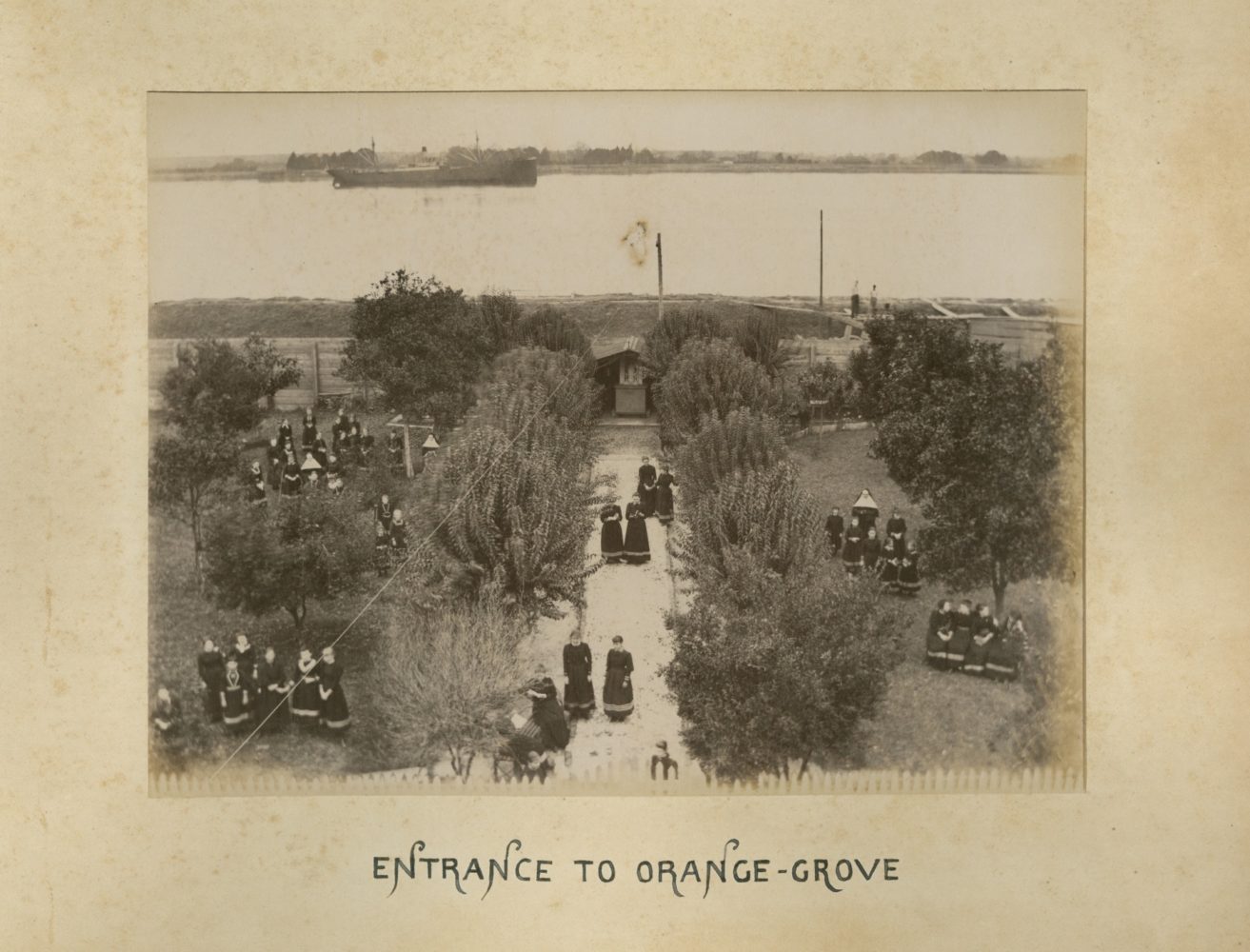Historic New Orleans Collection
Photographic Pioneer
An early New Orleans shutterbug was also an Ursuline nun
Published: December 1, 2019
Last Updated: June 4, 2021

The Historic New Orleans Collection
Mother St. Croix, Entrance to Orange-Grove, ca. 1889. Albumen print.
Born Marie Faureaud in Clermont-Ferrand, France, in 1854, St. Croix entered the missionary branch of the Ursulines at Beaujeu in February 1873. In October of the same year, she received her religious habit and the name Marie de la St. Croix. In late November, she arrived in New Orleans with boundless energy, a calling to teach (she was famed for her needlework skills), and the desire to learn photography. According to a 1947 article on St. Croix in the Times-Picayune, she quickly became an accomplished photographer under the instruction of Edward H. Claudel, a local optician, and Father Albert H. Biever, the Jesuit priest who founded Loyola University.
St. Croix’s photography was also encouraged by the Mother Superior of the convent, Mother St. Ignatius. In 1899, Mother St. Ignatius commissioned one of the sisters to purchase a new camera for St. Croix while attending a conference in Rome. The new camera allowed St. Croix to use 14″ x 17″ glass plates, in addition to 6½″ x 8½″. In 1904 she provided large prints for display in the Palace of Education at the 1904 World’s Fair in St. Louis. Those prints, signed simply “Photo by a Sister,” are now in the collection of the Louisiana State Museum.
The photographs in the album acquired by THNOC include views of the convent buildings and classrooms, as well as shots of the sisters and students going about their routines. St. Croix also captured the surrounding neighborhood, with the Mississippi River in the background. The convent was a cloistered community, with a fifteen-foot-tall board fence surrounding the property, so St. Croix’s exterior views were accomplished from either the tower of St. Ursula Hall (completed in 1893) or from one of several second-story balconies off the main building.
St. Croix continued to photograph after the Ursuline community moved to its third convent, on State Street, in 1912. The new location even had a darkroom for her use, but after the move, St. Croix’s work became less inspired and appears to have been done primarily for public relations purposes. There are fewer photographs of the new convent and none of life outside the convent walls. Mother St. Croix died at the convent on July 15, 1940, at the age of eighty-six. The album is the cornerstone of her photographic legacy and a rare example of early photography by a woman. It also provides a glimpse into the daily life of one of New Orleans’ oldest and most revered institutions.
—Jude Solomon, curator
